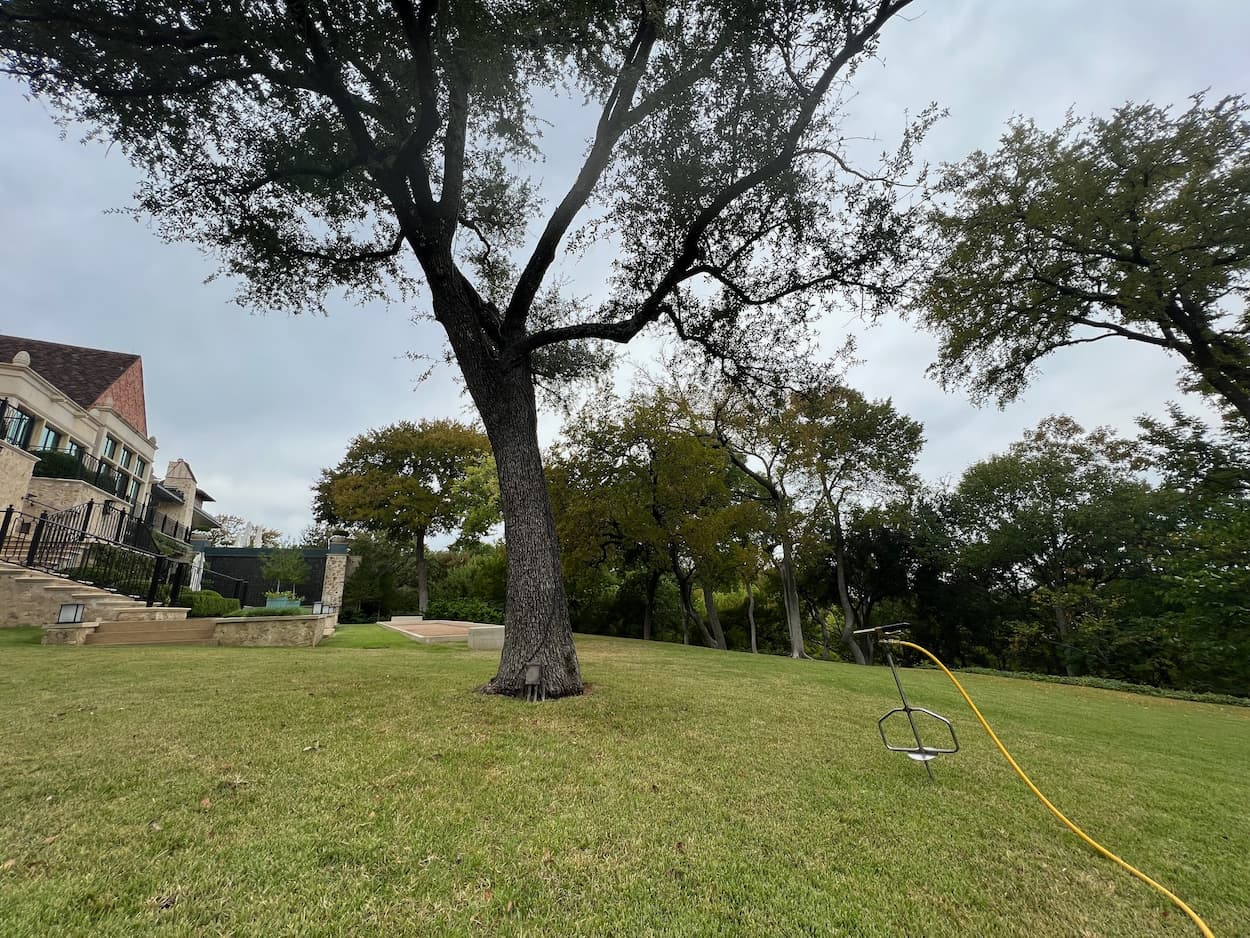Texas Shrubs & Tree Health Care Experts
Caring For Texas Shrubs & Trees Since 1990 Get A Free QuoteCall (817) 880-6130Tree & Shrub Pest Treatment Services in Quinlan, TX
Our ISA Certified Arborist Can Help Treat Your Trees and Shrubs From Pests in Quinlan, TX.
Arborist USA provides Tree & Shrub Pest Treatment Services in Quinlan, Texas, and the surrounding areas.
Situated in Texas, Quinlan is a small town that takes pride in its diverse variety of trees and shrubs. However, the health and beauty of this plant life can be threatened by pests. Therefore, the town’s strategic approach to tree and shrub pest treatments is not only vital but also a feat of its dedicated community. Quinlan remains dedicated to prolonging the health and beauty of its plant life with a balanced approach to pest management. This harmony between nature preservation and human intervention reinforces Quinlan’s commitment to protect its flourishing green landscapes for the enjoyment of future generations.
If you are in need of Tree & Shrub Pest Treatment Services in Quinlan, TX, please get in touch with Arborist USA today by calling us at (817) 880-6130, your Tree & Shrub Disease Specialist.
Signs of a Sick Tree or Sick Shrub
- Dead Branches
- Yellowing Leaves
- Fungi or Decay
- Bark Falling Off
- Discolored or Rusted Leaves
- Dying Tree or Shrub
- Leaf Discoloration
- Root or Insect Damage
- Leaves look like they’re being eaten
- Bark is Peeling
- Holes in leaves
- Holes on Bark or Branches
- Stunted Growth
- Canopy Dieback
- Bark Abnormalities
- Wilting
Tree & Shrub Helpful Tips
1. Common Pests:
Trees and shrubs in Quinlan frequently fall victim to pests such as beetles, aphids, scale insects, borers, and caterpillars. Initiating effective treatments as soon as these pests are identified can help mitigate the risk of spread and irreversible damage.2. Quick Identification:
The initial step of Quinlan’s pest management strategy emphasizes early identification and detection of pests. A quick response system allows the town to efficiently mitigate the spread of any detected pests, preventing extensive damage to its plant life.3. Organic Pest Control:
Quinlan remains staunch in its commitment to eco-friendly practices, prioritizing the use of organic pest control methods. The town seeks to cultivate a balanced ecosystem, encouraging the growth of beneficial insects that naturally keep pest populations in check.4. Systemic Insecticides:
Even though Quinlan prefers organic methods, stubborn and hard-to-reach pests necessitate the use of systemic insecticides. These are administered with care to maintain the balance between effective pest control and the overall welfare of the ecosystem.5. Biological Control:
To further strengthen the pest control measures, Quinlan incorporates biological controls in its strategy by promoting the growth of native predators, such as birds. This not only aids in pest reduction but also contributes to the biodiversity of the ecosystem.6. Preventive Measures:
Preventive care is an integral aspect of Quinlan’s approach. The town ensures that plants are regularly maintained with adequate watering, pruning, and other vital care so as to boost their natural resistance to pest invasions.7. Treatment Resistance:
With pests evolving to resist certain treatments, Quinlan has implemented a rotation policy for its pest treatments. This means frequently switching between different pest management techniques to prevent pest resistance and to maintain the effectiveness of the treatments.8. Seeking an Arborist:
Expert guidance is central to Quinlan’s pest strategy. The town regularly consults with certified arborists and pest control professionals to keep abreast of the latest pest management techniques and to adapt to changing pest behaviors.
If you’re concerned or have any further questions about our Tree & Shrub Pest Treatment Services in Quinlan, TX, or surrounding areas in North Texas, please call us at (817) 880-6130.
Tree & Shrub Pests
Listed below are common Tree & Shrub Pests found in Texas.
Aphids
A white soft body insect that creates a sticky "honey dew" structure on limbs or leaves, blocking nutrients.
Bagworms
Bagworms lay eggs that create small cone-shaped structures less than three inches in length.
Beetles
An invasive wood borer that is subject in all wood tissue that causes severe decline in trees health.
Gypsy Moth
A larva that boars into leaf structure that cause lesser of a foliation and decline in overall leaf structure.
Oak Gall
A growth deformity known as a "gall" commonly occur on oak trees subject to branches and other structures.
Termites
Termites, wood-destroying insect, eats away at all wood tissue, damaging the structures of the trees.
Twig Girdlers
Being a member of the long-horned beetle family, these girdlers are known to eat leaf and other tree areas.
Webworms
These caterpillars spin white webbing bag nests in tree branches and eat your tree foliage (leaves).
Certifications




Our Reviews

A+ BBB Rating based on 31 BBB Reviews
4.8/5.0 based on 83 Top Rated Local Reviews
4.6/5.0 based on 36 Facebook Reviews
4.0/5.0 based on 4 Trust Pilot Reviews

4.9/5.0 based on 90 Google Reviews
4.5/5.0 based on 13 Yelp Reviews
29 Recommendations on Nextdoor
Total Reviews: 286 ![]() Real Customer Reviews
Real Customer Reviews







